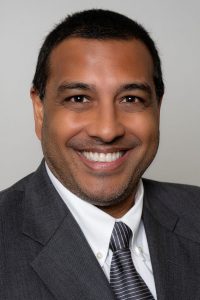Shetal Shah MD, FAAP is neonatologist at Maria Fareri Children’s Hospital and Immediate Past President of the NYS AAP-Chapter 2. He is the Chair of the Pediatric Policy Council.
Lois Lee, MD, MPH, FAAP, is a pediatric emergency medicine physician, member of the Pediatric Policy Council and co-editor of the book, “Pediatric Firearm Injuries and Fatalities: The Clinician’s Guide to Policies and Approaches to Firearm Harm Prevention.” This op-ed was published in Tampa Bay Times on June 2, 2022.
After Uvalde, we should agree on these 3 things to stem gun violence against kids. This is a public health issue, and we must treat it — and fund it — as such.
We grieve with the mothers, fathers, loved ones and the community of the 19 children and two adults gunned down in the school shooting in Uvalde, Texas. As pediatricians who’ve dedicated almost three decades of education — and our entire professional career — to keeping children safe, we are outraged to live in a country that has allowed the massacre of elementary school age children to happen again.
In 2012, we vividly remember locking eyes with other parents as we picked up our elementary-school age children after the massacre at Sandy Hook Elementary School. We recall the school board meetings announcing that forever after, our schools would be locked down for safety — and parents would need security guard escorts directly to the office if picking up a child early. Coming less than two weeks after the shooting in Buffalo, this latest act of violence has again re-ignited discussion about how best to address America’s epidemic of gun violence. As physicians and researchers, we urge consensus on three aspects of this issue.
Increase funding for gun violence research
In 2020, gun violence became the leading cause of death for children between 1 and 19 years old — surpassing motor vehicle accidents, cancer and drug overdoses. According to the Centers for Disease Control and Prevention, 4,368 children and youth died by firearms in 2020. This represents a 33% increase from 2019. There were 1,293 (32%) firearm suicides and 2,811 (68%) firearm homicides. Gun injuries also present a serious health disparity issue. Black non-Hispanic youth have homicide rates (14.5 per 100,000 youth from birth to 19 years old) 14 times higher than white non-Hispanic youth (0.97 per 100,000 youth from birth to 19 years old).
Regardless of politics, we must invest in more research to better understand how to reduce child firearm injuries and deaths from assaults, homicides, suicides and unintentional shootings. We must fund pediatric researchers who can identify children most at-risk of firearm injury and death, as well as protective factors. In the past 3 years, Congress has appropriated only $25 million per year to address the public health issue of gun violence. In contrast, the National Heart, Lung and Blood Institute, which partially funds research on heart disease, the No. 1 killer of adults, hosts a of budget of $3.8 billion. This year, President Joe Biden has requested $60 million for funding gun violence prevention research. This is a small national price to save the lives of children.
State-based solutions are limited
In the aftermath of the Sandy Hook murders, several states passed stricter gun control regulations. However, those who live in states with tighter gun restrictions can’t be lulled to complacency. The Buffalo shooter purchased his assault rifle in New York, a state with more restrictive gun laws. In states with tighter restrictions on the sales, possession and use of firearms, upwards of 75% of guns used in crimes come from other states. The public must realize limitations on firearm use are only as good as the interstate highway system. No region of the country can enact meaningful reform alone. The only true path toward creating policy to reduce the public health impact of gun violence on children runs through Washington, D.C., and must occur nationally. For this to occur, there must be a reversal of the current polarizing state of politics that deprioritizes our children and public safety.
Public health must be part of this conversation
Whether in an emergency room, operating room or trauma center, every victim of firearm injury becomes a patient. Physician researchers provide a unique perspective on gun violence, both as the medical responders with firsthand experience treating these patients and their families and by conducting studies to reduce its impact.
Yet in 2018, upon release of a paper reviewing public health strategies to reducing firearm injuries by the American College of Physicians, the National Rifle Association mocked the report. The NRA warned doctors to “stay in their lane,” and demeaned physicians by calling them “anti-gun,” and “self-important.” A social media backlash ensued, appropriately called “This is our lane.” Nonetheless, the message sent by the most prominent pro-firearm advocate group in the nation stigmatized doctors and researchers by labeling their work as politically motivated. Gun violence is a public health issue, and physicians, public health professionals and researchers must be part of a diverse group of voices that are heard.
Since the Columbine shooting in 1999, more than 550 children and school staff have been killed by guns. The ripple effects of gun violence have affected an estimated 311,000 additional kids. But the true emotional and mental health toll on the individuals and communities are unmeasurable. The pace of these events is accelerating, demanding renewed commitment to protect children and families. Our children are already forever marked by these events and the resultant active shooter drills they participate in at school. We can’t just accept that firearm injuries and deaths to our children are inevitable. We must begin creating solutions by agreeing on these simple, but small, pieces of a larger uniquely American argument.


